The Toyota Supra A70 lost the name Celica, as the two previous generations were the top of the range Celica. In 1986 the range was split in two, leaving on the one hand the front-wheel drive Celica, and on the other hand the Supra with rear-wheel drive and longitudinal six-cylinder engines. This is a GT, at the time a very expensive car and away from the pocket of any young man, it was often bought by people over 40 years.
It had a good commercial success in Japan and the United States, to a lesser extent in Europe, but more than 240,000 units were produced until 1993. The fact that so many units were produced means that its prices have fallen quite a lot, but they have already reached their minimum price. As of today it's going to go up even more, just like the M3 E36's cache went up 8000 turns back in the day. Hide your wallets, or you might want to empty them when this used car is finished, but interesting.
What does it look like?
The Supra A70, also known as the Supra Mk.3 (Toyota never referred to it that way) or 3000 GT, is a 2+2, GT-style sports car that copied the same formula as the Pontiac Firebird and the like. It was an American GT, as Ramón Roca pointed out. It had a long, low bonnet with retractable headlights, long engines, a low cabin and a trunk that was just enough. As standard the tyre size is 225/50 R16, the same for the spare wheel, although the rim is made of dirty steel. It had basically two designs of wheels, those that look like hubcaps (pre-styling) and five-spoke (restyling), the latter better cool the brakes.
The rear seats are for occasional use, but I have come to carry four girls squeezing a little (approved for five).
In terms of bodywork, we distinguish the Coupé and the Targa, the latter available for the whole commercial life. The convertibles have an obvious loss of rigidity when the roof is removed, the latter being placed in the trunk on special supports. In doing so, the useful capacity is lower than that of an A-segment car. In fact, the boot has a curtain that separates the luggage from the passenger compartment, and that does not get in the way as it is attached directly to the tailgate. The rear seats have lap belts in the first units, or three-point belts in the side seats in the most modern ones.
In general, the Supra A70 was not very rigid, first because there were not the same qualities in steel at that time, second for being a bit heavy (more than 1,600 kg with driver) and third for being very long, with cast iron block engines. Without the roof, and demanding the car minimally, the driver can perceive how the bodywork twists. In fact, if you jack it up with an open door, it won't close properly. Those were different times.
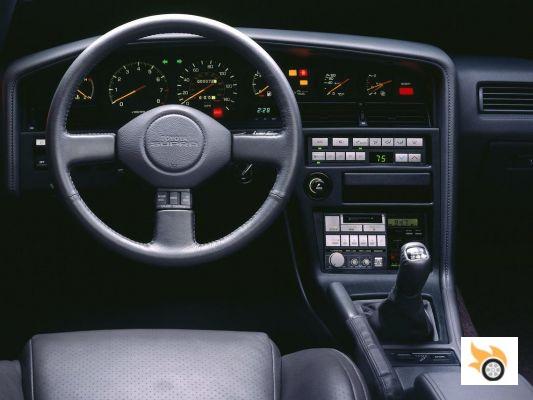
Although it was available with 2 to 3-litre engines, always with six cylinders and electronic injection, two three-litre engines arrived on the European market. On the one hand we have the 7M-GE, naturally aspirated with 200 hp, and on the other hand the 7M-GTE, turbocharged with 235 hp. The models of the second half of its life cycle had a slight gain in power. The naturally aspirated models of the first half have a horizontal grille that crosses the entire bumper, and the turbo have a central lip. In the second half all acquire the design of the Turbo, and change the red rectangular emblem by the symbol of ellipses of the brand.
At the time it was a car that had at its disposal advances and equipment items unthinkable in mid-range cars, such as automatic climate control with air conditioning, electrically adjustable driver's seat, variable rear suspension (TEMS), digital instrument panel (only in Japan), driver's airbag, power steering with height and depth adjustable steering wheel, ABS, on-board computer (Super Monitor), cruise control, radio CD player (late models), heated front seats, digital engine diagnostics system or electric adjustment of both rearview mirrors.
The Supra was a top of the range car, and as such was very well equipped and with a well cared for interior. Turbo's were the most equipped, easily found with leather seats, although there was also a textile upholstery that stands the test of time. You can quickly distinguish a well-kept unit that has really been garaged by the condition of the leather and other sensitive areas such as the handbrake lining or the center console cover.
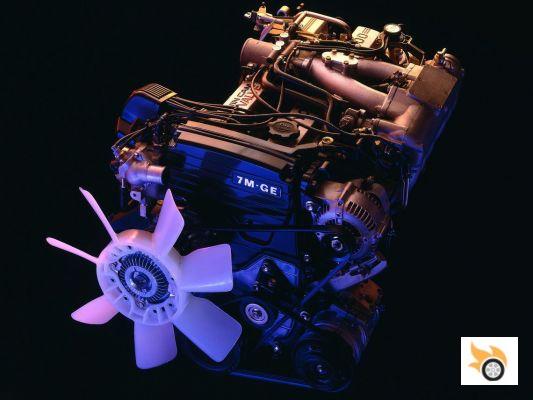
The 3.0 Turbo's are very interesting, but there are a few things to keep in mind about them. There are three things in this life that there is no escape from: death, taxes, and 7M head gasket failures. It's not just that the gasket material was crap, it's that Toyota didn't have bolts with the correct torque to hold the block and cylinder head together. One of the most sensible maintenance operations is to put in a hybrid or metal head gasket (after planning) and put in high torque bolts. In theory, it becomes a rock this way.
It should also be noted that the stock cooling system is suitable for cruising around in the fifties, but not for heavy and continuous use in the heat. The stock radiator is small, with a viscous coupling fan that emits a lot of noise. It is on the list of obligations to change all the water hoses, remove the fan and radiator, and replace them with a fat radiator and electric fans. If on top of that the air intake of the nose is enlarged, which is a bit tight because it's so low, then it's a piece of cake.
The saddest moment of the day is when the trip is over and you have to turn off the engine, which generates music.
These cars have a more comfortable ride than you might think, but the standard suspension was not designed to be very sporty. By geometry it is, double wishbones on both axles, but the springs have a lot of travel and the body shuffles a bit. Not only you have to put some modern shock absorbers (especially if you have the original ones), but also some springs a bit shorter, and certainly harder. Then it will start to have a sportier behaviour. It would also be a good idea to do something about the brakes, the standard ones leave a bit to be desired in terms of stopping power, and if they are used intensively the pads last very little.
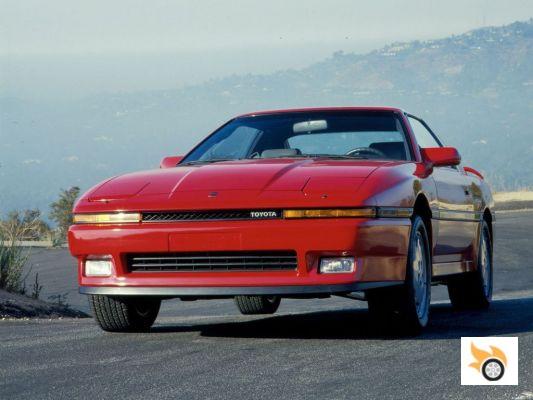
Despite being a 1987 design, the 7M-GTE engine has a very good performance/consumption ratio, even compared to modern engines. Although it doesn't have the VVT-i cylinder head (that's from the 2JZ of the next generation) it makes a very reasonable use of petrol, consuming between 9 and 12 l/100 km, and the Turbo doesn't spend appreciably more than the asthmatic atmospheric. Keep in mind that the naturally aspirated cars have a gearbox with shorter gear ratios, and the Turbo can go lower in revs. The four-speed automatic gearbox with overdrive is the same for both engines, and those who have one of these don't exactly speak ill of it.
From my own experience, a well maintained Turbo, driven regularly and realistically, doesn't get 11 l/100 km, and it depends a lot on the quality of the fuel. My Supra became addicted to Repsol Efitec 95 and gave worse results with Shell and CEPSA, at least 1 l/100 km extra. With 98 octane the result is more homologated. According to the manual requires 97 octane, and considering that 95 octane gasoline has up to 7% bioethanol, the octane rating is adequate to prevent the knock sensor from protesting. With 98 octane it's a bit lighter, although in normal driving you don't notice much difference. When it's pushed hard, then yes.
The performance of the naturally aspirated is nothing to write home about, but the Turbo reaches 235 km/h and 0-100 km/h in 6.2 seconds.
The Supra's handling is very noble as long as the tyres are in good condition. The Supra's oversteer only comes out when you demand it, and it's very easy to control, especially when equipped with the self-locking differential. The steering wheel is large, the driver can control the steering very well, and it is not at all treacherous. When it understeers it's also easy to recover, it's not complicated to drive, although I'm not in favour of it being driven by novices.
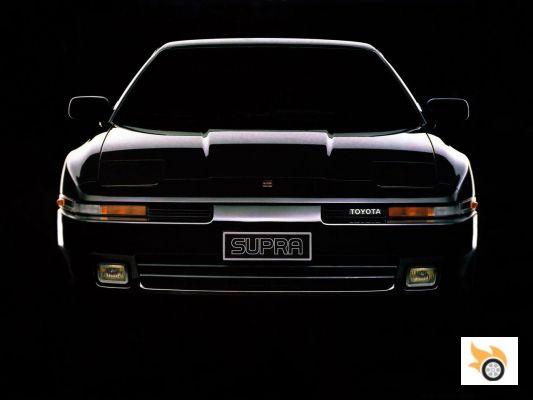
How much does it cost?
I bought my Supra in 2010, and prices don't go down anymore. Under 5.000 euros you can find units that a) need safe maintenance or b) its owner is desperate to get rid of it (or doesn't know what he has). From 5,000 euros it is easier to find units with the interior in good condition or minimally restored, the targa roof can add another 1,000 euros to the price, in the same way that the Turbo easily have prices 1,000 euros higher than the atmospheric.
If we find higher prices is that we are talking about units that have been minimally prepared, or whose owner has already invested time and money in improving it. Above 10,000 euros are either scams, or well over 300 hp with improvements in suspension, exhaust, restored interior (not always), brakes, etc.. If properly maintained, the 7M-GTE can live with more than 400 hp and a very respectable reliability.
Maintenance intervals according to Toyota are 10,000 kilometers or one year, and the cost is not prohibitive, but not cheap either.
There are people who have spent thousands of euros to replace all the interior rubber, hydraulic hood and trunk supports, leather upholstery, interior trim, exterior moldings, etc.. A Supra that is spotless is usually a good sign. A Supra that has a rickety interior and has a rear tubar indicates more tuning than the intention to have the car impeccable. I was very lucky, the previous owners were in their fifties and had it relatively well looked after, and it was 100% stock.
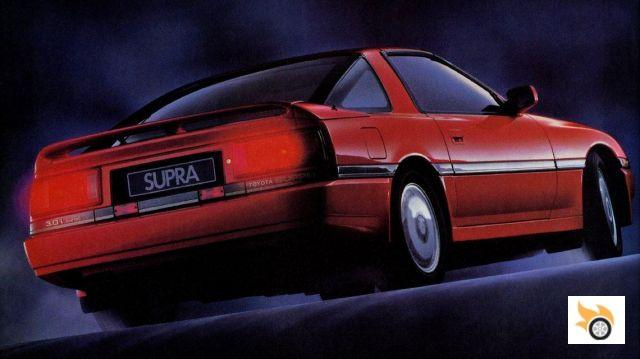
Conclusions?
We have to thank the producers of "Fast and Furious" and other Hollywood films that this car has not been particularly filmy. The next generation Supra A80s are much more sought after, partly because of that, and finding a stock one is like stumbling across the original "The Neverending Story" (the one that takes you out for drinks with the Childlike Empress, not the one from Michael Ende). Prices are quite reasonable for a car of its power and age.
Toyota still serves almost any spare part to this day.
It's not very easy to find a Supra in perfect mechanical and cosmetic condition at a reasonable price. I'm aware of the odd story, like someone who found a Supra with less than 50,000 kilometers on it, that had been sitting for 20 years, and was in excellent cosmetic condition. The engine needed a little pampering, but since it had only cost 1,000 euros "that old car" was a good deal. Farias, I still hate you, with love.
If you can squander 2.000 euros a year to maintain it and petrol, and take care of it properly, it's a classic to keep it indefinitely. I have no intention of ever selling mine, and if the engine blows up I'll keep it -decommissioned- until I can fit the 330hp twin-turbo 2JZ-GTE inside it. I don't know if I'm too objective in saying this, but I'm willing to starve to keep it, because they don't make cars like this anymore. Had I been able to convert it to LPG (they changed the regulations in 2009) I probably wouldn't have a Prius as a second car. If the unit is over 25 years old it can be insured for a very reasonable price, as long as the driver is not too young, and it is 100% IVTM bonus or "numerito".
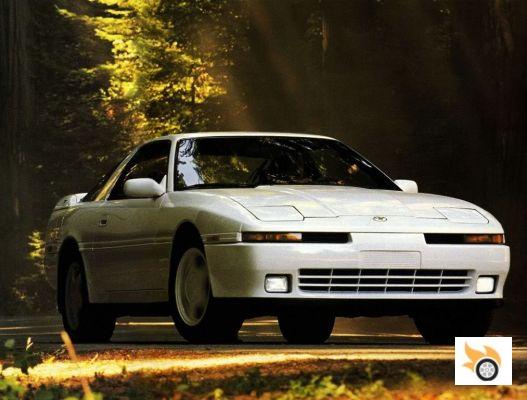
The best advice I can give is to NEVER buy a Supra with your eyes, you have to get some information beforehand.
The Supra A70 can be a good companion for those who miss the sensations of the 80s. A turbo engine with a delayed kick (it takes a long time to fill both cylinders), completely natural and controllable oversteer without electronic aids, an interior subordinated to the function and the driver, a design that will never come back due to passive safety regulations, just the right electronics, etc. For those who are not looking for a lot of performance, the naturally aspirated can be perfectly fine, if you are not allergic to changing gears and squeezing the tachometer up to 6,000 RPM or more.
In less than 10 years there will be cars that will match its performance with three very tight cylinders, in fact cars like the Clio RS Trophy already run the same in a straight line, and in curves they are even more agile. If we leave the premium brands and their astronomical prices in real coupés, practically only the Toyota GT 86 has that philosophy, and there is already a significant difference from one car to another when they are driven.
The A80 generation was discontinued when Toyota decided to become a greener and more volume-focused manufacturer -which it did- but an ideological replacement is on its way from BMW. I like both brands, even though they've done things I loathe, and I hope it's a car that lives up to expectations. Whether they make it a plug-in hybrid or not is the least of it, but that it's beautiful, that it's a GT, that it's a car that makes teenagers drool until they can buy it when they're older.
I bought mine when I was 26 years old, because when I was 9 years old I lacked more than 5 million pesetas to buy it (adjusting for inflation, more than 60,000 euros), but I just got into it, and Toyota won a long-term customer. For me it would forever be more than just an old car, and I don't want to look at anyone (or yes).

























